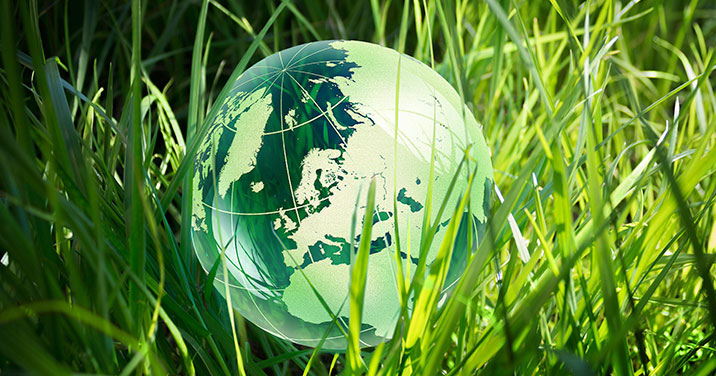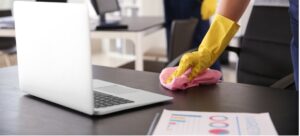Since “going green” was first coined as a term in the early 1990s, businesses of all sizes have been encouraged to reduce their environmental impact. From recycling everyday paper and plastic waste, to installing energy efficient lighting and equipment, businesses from every industry have found ways to implement eco-friendly practices and procedures.
One way in which any business can reduce its impact on the environment is through its cleaning practices. After all, every workspace requires cleaning in its own way, and a more eco-friendly workspace is not only better for the environment, but for the health of your employees and co-workers, as well.
The cleaning industry encompasses a wide range of activities, some more simple and others requiring specialized equipment. However, using natural or eco-friendly products and implementing more energy efficient practices can make just about any cleaning task made more “green”. Here’s a comprehensive breakdown of just what sustainability means for the cleaning world and how your business can do its part for the environment.
Eco Cleaning Materials
A good place for any eco-cleaning program to begin is by taking an inventory of the company’s current stock of cleaning products. This includes chemicals, paper products, cleaning equipment, and any item that may be related. Once this inventory is completed, your business will have a firmer grasp on their current cleaning practices and be in a position to identify what practices and materials pose environmental risks, and where to start looking for eco-friendly cleaning alternatives.
Eco-friendly Cleaning Equipment
Regardless of the job at hand, eco-friendly cleaning equipment is equipment that is energy-efficient. Cleaning equipment design has been heading in this direction more and more and choosing the most eco-friendly and energy-efficient option means knowing how to match a piece of equipment to the job at hand. This involves three factors: appropriateness, effectiveness, and usability.
Appropriateness
To effectively save on energy, the chosen tool should match the job. That is, it should be designed for the size of the space and task that it’s going to be used on. A large-sized, industrial vacuum cleaner, for example, is not the right choice for handling the nooks and crannies of cubicles.
Effectiveness
In many aspects of business and life, technology can either work for or against you. When choosing a piece of eco-friendly cleaning equipment for a certain task, then, it’s important take the time to check its specifications.
The greater knowledge you have of how a certain piece functions, as well as its strengths and weaknesses, the better suited it will be to your energy-efficient means. For instance, a vacuum cleaner that uses 50% less energy but takes twice as long to complete the job will be both less green and more expensive to use.
Usability
When purchasing cleaning equipment, it is vital to keep in mind those who will actually be using it on a day-to-day basis. If the piece of machinery is either excessively un-maneuverable or difficult to use, it will not only be less effective for the task at hand, but will also end up using more energy to complete the task at hand.
Green Cleaning Practices & Procedures
Green cleaning involves two guiding principles: preserving the environment and protecting the people around you. So, when it comes to eco-cleaning, sustainability means much more than simple “green cleaning”. It means developing sustainable cleaning practices that consider how they’ll impact employees, customers, and outside vendors alike.
Once the proper materials and tools are acquired, however, sustainability and green-cleaning calls for a third caveat: ensuring that it’s carried out by trained and qualified individuals. So whether you outsource your office maintenance to a company like MOM Cleaning, or have your own internal janitorial staff, make sure that they’re aware of your eco-friendly cleaning goals, and are given the opportunity to provide feedback on how you can best reach those goals.




